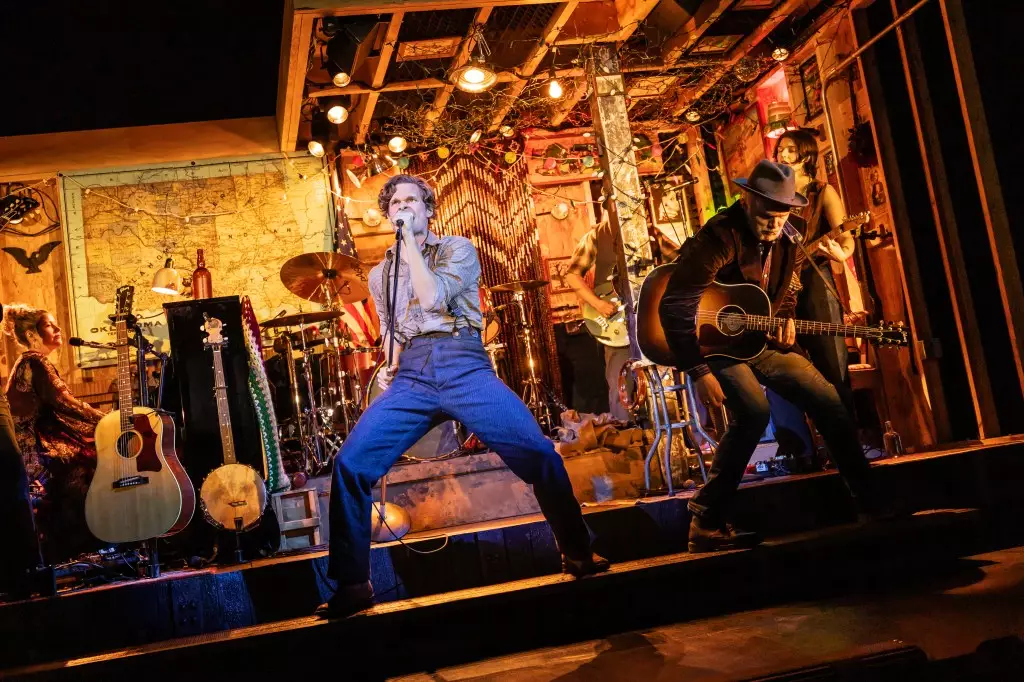As the riveting theater season edges toward its culmination with the Tony Awards scheduled for June 8, we can’t help but delve into the intricacies of Broadway’s current box office performances. Observing how various shows leverage their nominations and public anticipation can elucidate both the triumphs and shortcomings within this vibrant industry. This observation period reveals that not all nominees bask in the glow of their accolades; some face the stark realities of dwindling attendance and ticket sales even as they are celebrated in the award circuit.
Broadway’s box office reports for the week ending May 18 are particularly telling; while certain shows have taken hit after hit, others have managed resounding increases amid the competitive chaos. This nuanced dynamic raises fascinating questions about the way nominations affect public perception and ticket-buying behavior.
Shining Stars and Dark Clouds
One salient case is “Redwood,” starring the illustrious Idina Menzel. Despite receiving no nominations this season, the production announced an early closing and yet bizarrely reported a $191,581 gain over the previous week. This oddity might suggest a curveball in audience behavior; sometimes, the impending closure creates an urgency that incentivizes last-minute ticket purchases, even for shows that might otherwise slide under the radar.
In stark contrast, shows like “The Picture of Dorian Gray,” which enjoyed an impressive six nominations, saw a substantial boost of $120,388 to a total of $1,324,626 largely due to the addition of an extra performance. While sell-out shows naturally inspire greater attendance, the underlying figures reveal the necessity of context; performing more frequently can help a show capitalize on its accolades.
The Heavyweights Rise
Among the heavyweight contenders, “Good Night, And Good Luck” and “Sunset Blvd.” have made staggering gains, collecting $143,803 and $146,711, respectively. With five and seven nominations, respectively, these productions are proving that acclaim manifests in ticket sales when paired with strong narratives and performances. This raises a crucial consideration: does critical acclaim drive box office success, or does immediate public interest wield greater influence?
Meanwhile, the production “John Proctor Is The Villain” reached a standing-room-only status at The Booth. With a climb of $37,852 to $634,363, it shows that audience engagement can evolve as word-of-mouth spreads in ways that nomination figures cannot entirely predict. “Purpose” and “Oh, Mary!” continue this trend as they fill their seats, while struggling shows like “Smash” and “Gypsy” reflect a concerning trend as they navigate attendance slump among competing narratives for audience attention.
The Struggle of Lesser-Known Entities
On the other side of the spectrum, we witness productions grappling with their marketing and engagement strategies, evident in “Boop! The Musical” and “Real Women Have Curves.” These shows saw moderate declines that could serve as cautionary tales highlighting the importance of effective branding in a crowded theater landscape. With average ticket prices around $68.05 and $65.40, these figures indicate a struggle to resonate with audiences willing to pay a premium for a transformative experience.
Interestingly, even productions like “Othello,” which suffered a shut-out in nominations, managed to maintain robust ticket sales. With a gross of $3,206,029 and consistently high attendance rates, it offers a contrasting narrative against shows that sacrifice artistic merit for awards recognition.
The Bigger Picture: Broadway’s Overall Health
Despite the misses and wins among individual shows, the overall Broadway landscape remains resilient. With total grossing for the week hitting $44,351,676 — a 2% increase compared to the previous week — it signifies ongoing allure for audiences. The 2024-2025 season has exhibited a robust 20% increase over last year’s figures, indicating an upward trajectory, and even with the ongoing cutthroat competition, Broadway’s heart beats steadily for lovers of theater.
The real question looming over this radiant landscape, however, is how producers and showrunners will adapt in this ever-evolving ecosystem. In an age where instant feedback permeates social channels and audience preferences shift rapidly, understanding the nuances of both the acclaim and the box office is critical. As contenders jostle for recognition, one thing stands clear—Broadway, teetering between the artistic and the commercial, is embarking on an exhilarating journey that promises to keep spectators guessing.

